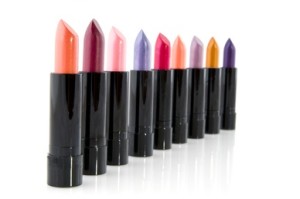Trademark the Name of a Cosmetic Brand

Cosmetics are a multibillion-dollar industry. In fact, consumer spending on cosmetics in the U.S. alone tops $50 billion. And it’s more than just makeup. Skin care, body lotions, moisturizers, facial creams, and beyond – all of these products fall under the cosmetics umbrella, and consumers remain eager to purchase them. If you’re considering starting a cosmetics business, whether distributing other brands or creating your own, it’s important that your prospective customers be able to tell you apart from other sellers – it’s a crowded marketplace out there.
Registering a trademark for your cosmetic brand– as well as for any proprietary names for different products in your cosmetic line (such as skin creams, concealers, or other types of the vast number of products out there) – is the strongest step you can take toward protecting your identity and ensuring that customers who are looking for you and your products can find you – and not another business or product line that might be confused with you.
How, exactly, does a registered trademark protect your cosmetic brandand product names? The United States Trademark & Patent Office issues trademarks with the intention of preventing consumer confusion. A registered trademark ensures a few things:
- That your name isn’t likely to be confused with an existing trademark
- That later trademark applicants can’t register a similar or identical name to yours
- That you can take legal action against other parties or businesses that may infringe on your trademarks.
- That adequate public notice of your ownership of your trademarks is available.
Receiving the full extent of these benefits requires trademark registration – a process which requires several steps. In preparation for those, this overview gives you an idea of what to expect.
1) Research existing trademarks for cosmetics brands
A thorough trademark research process gives you a higher chance of a successful application – the USPTO will reject an application with an identical or similar name to an existing cosmetics trademark (or one in a related industry that may still be confused with yours). Once you determine the name you’d like to use for your cosmetics company and/or products, you’ll need to research existing marks (or enlist the services of a trademark attorney who can provide a more complete search) and make sure that your desired name isn’t already in use.
There’s one other thing to keep in mind when choosing a trademark name – the strength of the mark. The USPTO provides little to no protection for weak trademarks that are merely descriptive of the product or company they’re attached to. So you wouldn’t want to choose a brand name that simply tells the public what it is you do or sell – “cosmetics,” “makeup,” “beauty,” and other words would need unique modifiers attached to them in order to differentiate you not only from other companies, but also from “mere description” of the products you offer.
The strongest marks are those that are “fanciful,” (newly formed words or phrases) or completely “unrelated” to your cosmetic products. “Suggestive” marks are usually also acceptable to the USPTO – those are names that may have some connection to your products, but only as a distant relation, not a direct description.
So if you’re trademarking a certain kind of cosmetic product that you want to sell – a facial lotion, for instance – you’d need to choose a unique name that might provide a connotation to the product, but isn’t overly descriptive of it. You can still use a more descriptive name, you just can’t trademark it for your exclusive use.
2) Submit a trademark application for your cosmetic line.
The next step after you’ve suitably determined names for everything you want to register trademarks for – company name and/or cosmetic products – is to submit the application to the USPTO. The trademark application is where you’ll lay out the details of your mark – not only your name, but also how it will appear (plain text or designed in some way) and how it will be used in commerce to identify your product. With your application, you’ll include a trademark specimen to illustrate that “use in commerce” – typically, this will be a picture of your packaging that shows how you are using the trademark.
In the case of trademark names for specific cosmetic products, you’ll need to submit a separate application for each product name, along with the appropriate trademark class of goods for each product. Classifying products is an area that holds up many trademark applications – ensure that you list any and all appropriate cosmetics classes for your specific products, as the USPTO may issue an office action(request for correction or clarification) or incorrect or incomplete classifications.
3) Use your cosmetics trademarks correctly.
A successful trademark registration means that you are now entitled to the full protections and benefits that we talked about earlier. Your responsibilities continue, however, as you’ll need to monitor the marketplace for other businesses that might be using similar or identical names to yours. Some may do this by accident, and some may use “lookalike” or “soundalike” names in order to confuse consumers into doing business with them instead of you. A federal trademark registration provides broad protections against this kind of infringement, but it’s up to you to actually enforce these rights.
Do you need assistance with a trademark matter?
Contact an Attorney Today